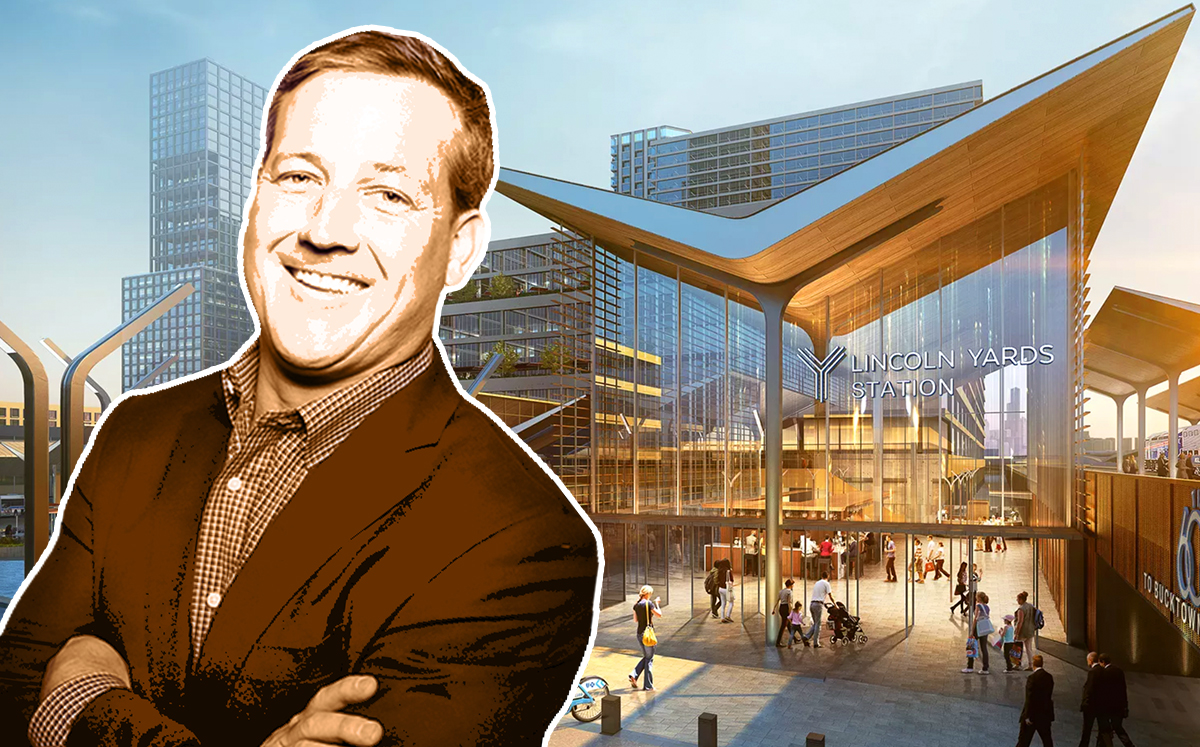UPDATED: Sterling Bay’s revised plans for its Lincoln Yards mega-development received key initial approval from the Chicago Plan Commission Thursday after months of give-and-take with the local alderman and contentious community meetings.
The $5 billion project along the North Branch of the Chicago River could be one of the biggest developments in the city’s history. Though it has gone through a community input and aldermanic review process — and has undergone a number of changes — not everyone is on board with Sterling Bay’s plans.
“All we’re asking is slow it down,” said Katie Tuten, co-owner of the Hideout, a beloved bar and concert venue in the shadow of Lincoln Yards. Her comments echoed the sentiments of many of the 100-plus public speakers at the meeting.
“We want more time to study it. It came out Saturday. We have many questions,” she said.
Initially, Sterling Bay planned to replace the old Finkl & Sons steel plant site with 13 million square feet of office, residential, hotel and retail space, as well as 13 acres of green space, numerous Live Nation-backed entertainment venues and a 20,000-seat soccer stadium.
But after complaints from neighbors and Alderman Brian Hopkins (2nd), Sterling Bay made a number of changes to its plans, including scrapping the soccer stadium and increasing the amount of green space to 21 acres, including an 11-acre park with sports fields.
The plan voted on Thursday was the third revised proposal from Sterling Bay, with the most recent revision released less than a week ago. Hopkins signaled his approval for the revised plans at the same time.
“The basic outline of Lincoln Yards is not new,” Hopkins said at the Plan Commission meeting. “It’s changed, it’s evolved, changed dramatically for the better, in my opinion.”
The Chicago-based developer previously said it would reduce the maximum height of buildings in the 54-acre development from the initial proposal of 800 feet. The tallest building in Sterling Bay’s plan will rise 650 feet, according to city documents.
There will now be up to 6,000 residential units in the project, an increase of 1,000 units over earlier proposals.
The city is requiring that 20 percent of those units be affordable, though Sterling Bay will pay $39 million to reduce that affordable requirement by one quarter, according to the city. One quarter of the required 20 percent affordable units — about 300 units — will be included on site at Lincoln Yards.
One of the most controversial aspects of the proposal was Sterling Bay’s partnership with Live Nation to bring up to five entertainment venues to the site, with capacities ranging 100 to 8,000 seats. The plan caused independent music venues to form a coalition to fight the plan.
The deal with Live Nation was abandoned when Hopkins came out against it and the soccer stadium. Though Live Nation is not part of the plans any longer, Sterling Bay will still have “smaller, independent” entertainment venues dispersed throughout the development, the firm’s lawyer told the commission.
The commission Thursday approved plans that will divide the massive development into seven subareas. The initial phase of construction will include two buildings totaling 1.3 million square feet of office space and more than 100,000 square feet of retail. A parking garage will also be included in the first phase, as will infrastructure improvements and an extension of the riverwalk. There was no word on when the work could begin.
The commission did not weigh in on Mayor Rahm Emanuel’s plan to create a new tax increment financing district to help pay for infrastructure improvements in and around Lincoln Yards.
The city has proposed creating the 168-acre TIF district, which could raise $800 million over 23 years, but the plan has met with opposition from the community and some aldermen.
“We are told that now is not the time or place to question the TIF,” Alderman Michele Smith (43rd) said at the meeting. “Yet every visual the applicant has shown us includes roads and bridges, all of which are proposed to be paid for by a public TIF which has not received enough scrutiny.”
The Lincoln Yards plan still needs several more city approvals, including a vote of the full City Council. The TIF district also still needs approval from the city.
Despite concerns about the plan’s specifics and its impact on the area, some city leaders said the benefits of the project are overwhelming.
“It’s more than just about the small details,” said Alderman Raymond Lopez (15th). “We have to move forward on projects that are transformative.”
